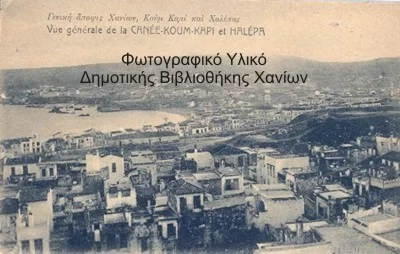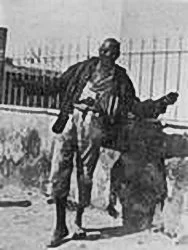Halikoutes, the Africans of Crete
Lawyer Charidimos Papadakis, from the village of Selia near Plakias in Rethymno, has spent three years researching the Halikoutes or Halikoutides, the African slaves and economic migrants who came to Crete from the 17th century onwards.
Mr Papadakis has travelled extensively in Crete, Turkey and Libya to gather information on the Africans and other slaves of Crete. The cover of his book, “The Africans in Crete, Halikoutes”, published by Karayiannakis Graphic Arts in Rethymno, shows an African Cretan, Kemal Tucman, who was born in Rethymno in 1922 and died at Ayvalik in 2007.
The first Africans came to Crete following the fall of Venetian Heraklion to the Turks in 1669. Slave markets flourished. Black slaves were “imported” from central Africa via Cairo, while white slaves were brought from the North. Crete became a slave-trading centre, with slave markets held on Noel Street in Chania and in the Meidani, or central market, in Heraklion.

The second mass transportation of slaves was during the period of Egyptian rule in 1830-40. Freed slaves serving in the army of Mehmet Ali founded a village, Koum Kapi, outside the walls of Chania. African economic immigrants also arrived at regular intervals, in search of a better future. Slave markets continued to operate in Crete until the 1890s.
 The word “Halikoutis”, Mr Papadakis notes, is little known. It is still heard in some parts of Crete, as a pejorative term, but few people know what it actually means. “Halikoutis” is derived from the African command “Hal il kuti”, meaning “put the box down”, a phrase commonly used among African porters.
The word “Halikoutis”, Mr Papadakis notes, is little known. It is still heard in some parts of Crete, as a pejorative term, but few people know what it actually means. “Halikoutis” is derived from the African command “Hal il kuti”, meaning “put the box down”, a phrase commonly used among African porters.
The African Halikoutides were poor labourers who mainly worked in the harbour, or as fishmongers, slaughterhouse assistants and so on. They were Muslims and spoke Arabic. They were meanly dressed, often barefoot, and lived in small rooms and shacks, which is why the word “halikoutis” came to mean an untidy or slovenly person, along with the unintelligible language they spoke.
It is worth mentioning how the Halikoutides celebrated May Day in Chania. On the first of May they set out from the Ano Koum Kapi neighbourhood and went to the beach of Nea Chora. There they ate, drank and danced. At sunset they danced back home, led by Ali Kogos, a tall, skinny man rhythmically beating a drum. All the inhabitants of Chania, Greeks and Turks, watched the procession which dispersed peacefully when it reached Ano Koum Kapi. During the period of the Cretan State, the procession stopped in front of the prince’s palace. To honour the prince, they chanted a song they had made up themselves.
 However, despite living on the island for three centuries, the Halikoutides were ignored by writers, except for a few chance references, and disappeared. We do not know where their descendants are today or if they remember anything about their ancestors who lived in Crete.
However, despite living on the island for three centuries, the Halikoutides were ignored by writers, except for a few chance references, and disappeared. We do not know where their descendants are today or if they remember anything about their ancestors who lived in Crete.
The book provides information on the settlement of Africans in Crete, their work, dress and religion. Contemporary travellers and authors are also mentioned.
Ali Gogo, Abla, Salis Chelidonakis, were a few of those who chose to stay in Crete until their death. The author also presents some of the modern-day descendants of the Africans of Crete, whom he met in Turkey and Libya.
False article. The slave trade is not the starting point of the African presence in Crete. It goes back to the ancient times, during the Bronze Age. Cyprus had been dominated by the black Egyptians in 570 BCE, and then, relations between Africans and Europeans carried on, as the Mediterranean area has three foundations which are black Africa, (formerly North Africa before the invasions), Asia and Europe. So, black people have always been present in the Mediterranean islands. Herodotus even mentioned the presence of African pygmies in the same islands.
Obviously, he did not know that the first “Radio” brought to Crete from USA, before 1930, was also called “Halicouti”, referring to it’s appearance; “Chalkino Kouti”. There were No Radio stations those days in Crete, and No Power. SO, the radios were useless and had only decorative use. I am not quite sure about His investigation, as the Egyptians he refers to (1700 – today) were called Gypsies (from Gyptios, from Egyptios). Sadly when people talk about Gypsies today they mean Roma (Tsigganous). There are quite a few Halikoutakis in USA (all born after 1930). Chelidonakis is of course a totally different name. Nothing to do with Halikoutakis. It is not impossible that two “names” were created independently. I will like to see concrete evidence,.